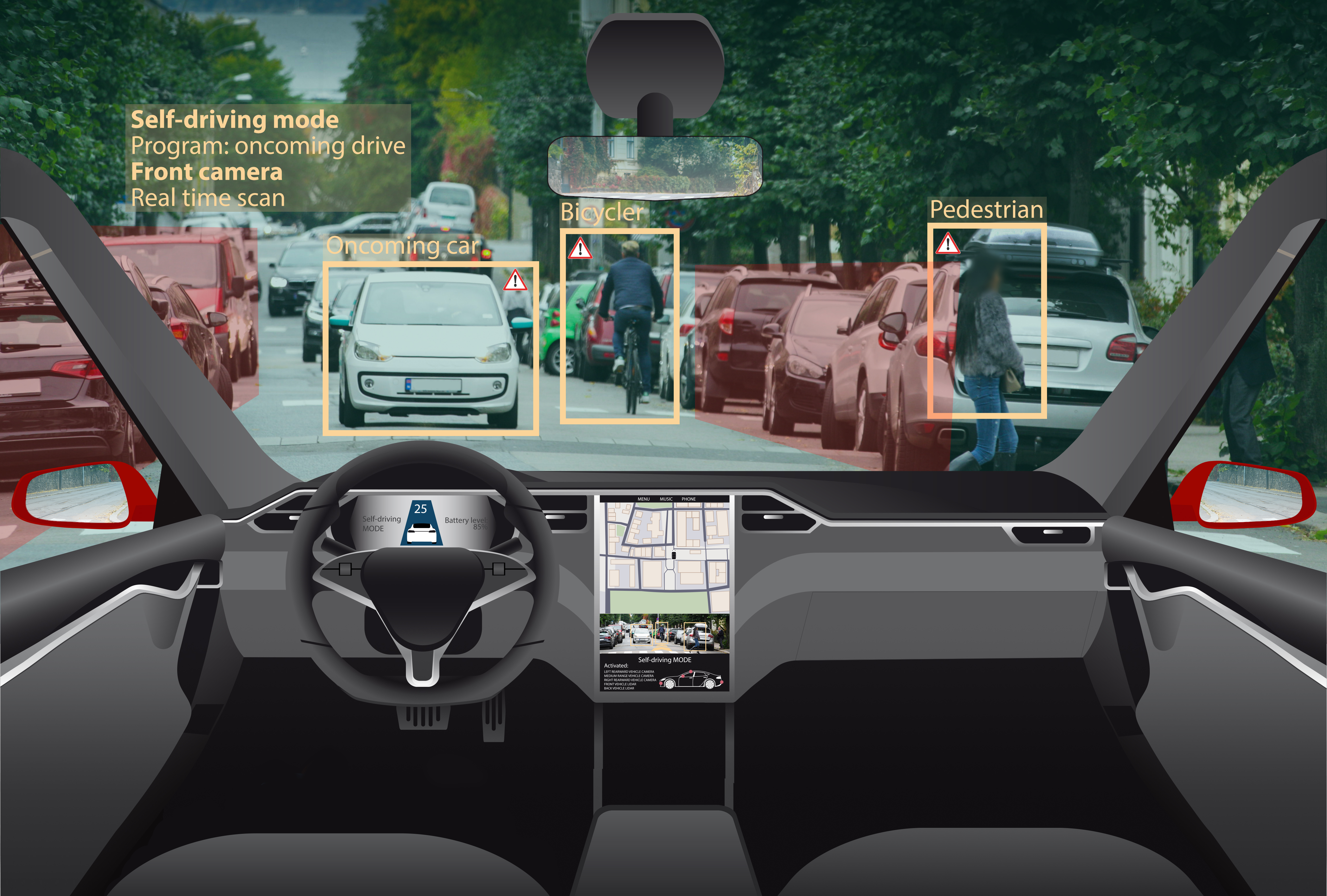In today’s world, new technological inventions are being introduced to make life considerably easier. The auto industry has also been a subject to new groundbreaking technologies. The invention of the autonomous vehicle concept has been subject to debate in the auto industry circles. The billion-dollar question remains: How long before autonomous vehicles hit the road? A year? (Read this: GM plans large-scale launch of self-driving cars in U.S. cities in 2019) Maybe a decade’s time? (Read this “Uber boss says driverless cars are at least a decade away”)
The debate goes on and on.
This analytic brief would cover what is working in favor of autonomous vehicles and what is not.
The headwinds
Energy Consumption:
One of the current problems with autonomous vehicles is energy consumption. Energy consumption of running an autonomous vehicle (i.e. its computers and sensors) is around 4kW. Add this to the fact it takes an identical 4kW thereabout to drive your car, we are looking at energy consumption doubling when working with an autonomous vehicle.
 With autonomous vehicles, your fuel economy and/or battery range is slashed in half. An EV with sticker 150-mile range would have a slashed range of 75 miles if it is running autonomously while a regular car that has a 35 mpg rating would give less than 17 mpg if ran autonomously. As the industry is pushing hard to increase the battery range, and fuel economy of the vehicles, this energy consumption seems to be a major step in the wrong direction.
With autonomous vehicles, your fuel economy and/or battery range is slashed in half. An EV with sticker 150-mile range would have a slashed range of 75 miles if it is running autonomously while a regular car that has a 35 mpg rating would give less than 17 mpg if ran autonomously. As the industry is pushing hard to increase the battery range, and fuel economy of the vehicles, this energy consumption seems to be a major step in the wrong direction.
As a comparison a human driver consumes 130 calories per hour driving a car. That is a piece of toast with some butter on it. So from an energy consumption perspective, the choice is: a piece of toast or half the mpg of your car!
The Cost Factor:
While autonomous vehicles are not in mass production yet, the preliminary estimate for the cost of a completely autonomous system is set at $15,000.
Wait for it…
We are talking just the autonomous system! The vehicle itself costs $15,000 too! Or more, depending on the brand/type of car you are buying.
Tesla argues that the autonomous systems do not require giant LIDARs (read more here: “Elon Musk still doesn’t think LIDAR is necessary for fully driverless cars”), an opinion not shared by other players, including General Motors (read more here “GM Advances Self-Driving Vehicle Deployment With Acquisition of LIDAR Developer”). I’ll go with the consensus that LIDARs are necessary for making a vehicle autonomous. The cost estimate of 15K for the autonomous capability is based on the consensus of LIDAR requirement.
Imagine spending $15,000 on a brand new vehicle and being asked if you would love a “$15k upgrade option” so you could sip coffee and read the papers on your way to work. Not inspiring, is it?
Handicapped in Bad Weather:
Having a hands-off experience when on a road trip is exciting. However, people using vehicles with ‘Driver Assist’ features will attest that while the feature is amazing (when it works), it disappoints in bad weather.
Factors such as snowy roads, nighttime, dirt covered sensors etcetera hamper the functionality of driver assist functions and autonomous driving features. All demonstrations of autonomous vehicles I’ve seen show the vehicle navigating in clear weather, daylight and with clear marking on the road. I own and drive a 2018 Chevy Volt and the limitations of the driver assist features deserve a separate detailed description.
The tail winds:
The Big Data:
There is an unfathomably extensive range of data being collected from apps, fleets, traffic, etc. This bodes well for autonomous vehicles as Artificial Intelligence (AI) thrives on Big Data. With Big Data and AI, autonomous vehicles have the added advantage of training its algorithms and extracting insights that humans cannot.
From a technological perspective, autonomous vehicles when working well, can arguable make better driving choices such as efficient routes, defensive and attentive driving which would potentially reduce the number of road accidents.
Big Money:
The financial backing for the development of autonomous vehicles has been mind-blowing. Big Money players (and governments) are invested in the success of autonomous vehicles.
Simply being involved in autonomous vehicle developments sees companies’ stock prices rise. There is no bigger incentive to working towards the success of autonomous vehicles, is there?
Chess vs Conversation (Can We Both Win?!):
The Lex Fridman’s MIT class on self-driving cars class (“MIT 6.S094: Deep Learning for Self-Driving Cars”) compares the challenges of autonomous vehicles on a sliding scale of “Chess” to “Conversation”.
 The former is very structured with a strict set of rules but a high number of combinations while the latter is unstructured (cannot be described with pre-set rules) and generally follows rules but can at moment go off-script.
The former is very structured with a strict set of rules but a high number of combinations while the latter is unstructured (cannot be described with pre-set rules) and generally follows rules but can at moment go off-script.
AI excels in the former and can fail or be tricked easily in the latter. In my opinion, autonomous vehicles would be a success in highly structured environments such as shuttle buses in predetermined routes, parking and retrieving cars from parking structures etcetera.
However, it gets much trickier in crowded city traffic situations where safe driving requires driver-to-driver and driver-to-pedestrian eye contact.
In the likely event of autonomous vehicles being deployed in structured environments, there would definitely be a hurray from autonomous vehicle proponents and investors celebrating the dawn of the autonomous age, regardless of a dearth in adoption.
This whole autonomous movement is not unlike Segway. (read here: “WELL, THAT DIDN’T WORK: THE SEGWAY IS A TECHNOLOGICAL MARVEL. TOO BAD IT DOESN’T MAKE ANY SENSE”) It promised revolutionizing personal transportation but ending up being applied as a niche application and not as disruptive a technology as it threatened to be.
Does Autonomous Vehicle suffer from the same Segway fallacy?
——-
Written by Sudhi Uppuluri
 Sudhi Uppuluri is the Technical Director and co-founder at CSEG. Sudhi Uppuluri leads a team of experienced system engineers with a focus on modeling and quantification of advanced technologies on vehicle fuel economy, energy consumption and thermal management. CSEG teams with ajor OEMs and Tier 1s providing design direction via advanced modeling.
Sudhi Uppuluri is the Technical Director and co-founder at CSEG. Sudhi Uppuluri leads a team of experienced system engineers with a focus on modeling and quantification of advanced technologies on vehicle fuel economy, energy consumption and thermal management. CSEG teams with ajor OEMs and Tier 1s providing design direction via advanced modeling.
He has various technical publications on related subjects in SAE and AIAA journals. He holds a Masters in Aerospace Engineering from the University of Illinois at Urbana-Champaign and a Certificate in Strategy and Innovation from the MIT Sloan School of business.
CSEG is the maker of PowertrainLive® is a high fidelity, predictive, vehicle simulation software package that evaluates the vehicle-level impacts of technologies and components on fuel economy and system performance. PowertrainLive® is a cloud-based SaaS with standard models of conventional, hybrid and electric vehicles which are correlated to dynamometer. Examples of what can be simulated through PowertrainLive include: Higher efficiency components, autonomous technology, waste heat recovery, and new control algorithms.
sudhi.uppuluri@cseg.us

